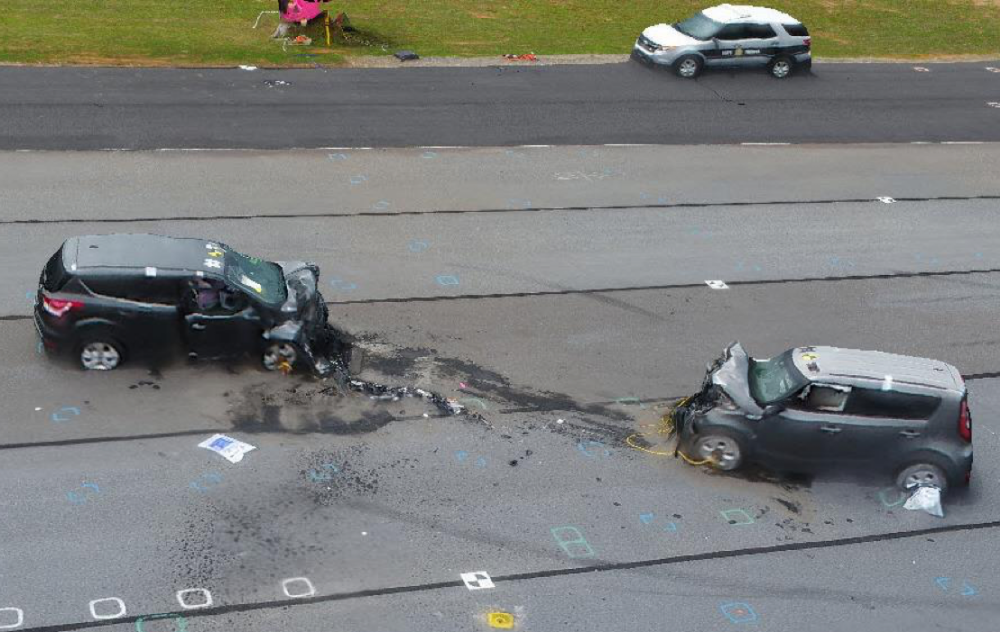The N.C. Department of Transportation Division of Aviation’s Unmanned Aircraft Systems (UAS) Program, the North Carolina State Highway Patrol, and the NCDOT Photogrammetry Unit have studied the feasibility of using drones to create 3D models of collision scenes, and the findings could signal good news for motorists.
Collision reconstruction helps uncover how and why a crash occurred. It can provide detailed and accurate information for collision analysis, which helps improve traffic safety. The goal is to complete the recordings in a quick and efficient manner that still produces useful information. Current methods of investigating collisions can be time consuming and require highway closures.
In May, state and local agencies were brought together at the Buncombe County Public Safety Training Facility where a head-on vehicle collision was demonstrated. The scene was mapped by the Division of Aviation UAS flight team using drones, and by the State Highway Patrol Collision Reconstruction Unit using a traditional laser scanner.
The teams found that using drones cuts the time needed to perform an accurate reconstruction from 1 hour 51 minutes to just 25 minutes. Crews would be able to start clearing the scene of a collision more than an hour earlier, and that means traffic can start moving that much faster. Drones also significantly reduce the risk posed to personnel involved, provide an aerial perspective of the scene, and are cheaper and easier to use than current technologies.
NCDOT’s photogrammetry unit performed the image and data processing. The full study is available on the Division of Aviation’s website.
Source: Press Release

